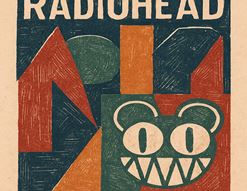Who was it who said that all you need is ‘three chords and the truth’?
Whoever it was, I’m calling them out on that, and offering up ten incredible tunes that utilise 25% more in terms of chord use. Yep, we’ve looked at 3 chord songs already, so today I’m going large and checking out a selection of amazing songs that make full use of 4 whole chords.
Adding That Fourth Chord
Whilst we aren’t talking about adding Mozart-levels of complexity here, sticking in a fourth chord can really expand the melodic and harmonic potential of a tune. That fourth chord choice is often a minor chord, and can add some real emotional resonance to even the make straightforward of songs.
You’ll often see a progression that goes C - F - Am - G. It’s highly prevalent in the world of music (also arranged in C - G - Am - F and in a few other ways) and is known theoretically as the I - V - vi - IV progression. Those roman numerals represent whereabouts in the major scale these notes appear, with the ‘I’ being the song’s key.
But enough of that! Let’s get some tunes going! Three chords, the truth… and one more chord!
The Songs At a Glance
Good Riddance (Time of Your Life) - Green Day
Three Chords and the Truth…and One More Chord
Let it Be - The Beatles
This late career entry from the Fab Four (late for the band, not for Macca himself I suppose) sees the Beatles’ multi-instrumentalist co-frontman hit his zenith as a reflective songwriter. Even though it’s credited to Lennon-McCartney, this is a full-on Macca composition, and apparently John strongly disliked the tune! A talented man, but there’s no accounting for taste.
The song, which revolves around C, G, Am, and F (making it I - IV - vi - V, I suppose), was released in two forms: a single, with the orchestra brought down low in the mix (and a less aggressive George Harrison guitar solo) and the album version, with both the orchestra and George turned up louder. Either version is a timeless classic, no matter what Lennon thought!
No Woman No Cry - Bob Marley
Demonstrating just how different the same chord progression can sound when in the hands of another writer, this Bob Marley classic actually utilises the same C, G, Am, F progression as Let it Be. Can you hear it?
It shows you how much you can transform a plain old chord progression by changing up the rhythmic pulse, flavouring it with certain instruments and having an entirely different vocal melody. Both are brilliant, of course, and nothing alike.
Learning to Fly - Tom Petty and the Heartbreakers
Tom Petty’s tune here is a good example of keeping the same chords for both the verse and the chorus. Changing the melody and instrumentation separates the parts, but underneath that, it’s the same F, C, Am, G chord progression all the way through. You’ll no doubt notice that these are the same chords we’ve been looking at, yet again, in a different order. Familiar but fresh is the key here!
Forever Young - Alphaville
We’re on a roll here: this amazing 80s anthem also makes use of the C, G, Am, F progression. Again, it’s nothing like those earlier songs, due to how infinitely useful that set of chords are. In full disclosure, I should admit that there is in fact a Dm used instead of the C now and again, but omitting it doesn’t hurt that song at all, and I do like this tune, so it stays!
With or Without You - U2
Simple as it is, With or Without You is a relatively unusual song in terms of writing. It never strays from its solid D, A, Bm, G chord progression (notice that it’s the same I - V - Vi - IV as before, but everything is up a tone) except for right at the end when the bass rides on a D note for a while before returning to the progression. That in itself isn’t strange, but the choruses don’t change or leap out musically in any way at all: it’s as if they are merely further parts of each verse. The verses themselves don’t follow particularly strict melodies either, preferring to change around and offer up variations. The song builds to something of a crescendo but then calms back down to a tone of regret, all the while playing those same chords over and over.
But hey, it works a treat!
Dammit - Blink 182
I’ll give you three guesses which chords are in this top tune from pop-punkers Blink 182? You guessed it! Our old friends C,G, Am and F are back in action, proving to all that they are music’s hardest working chords. This is often a closer at their live shows, and for Blink fans, this is their best song.
Last Kiss - Pearl Jam
I’m saying this was Pearl Jam only because that’s the version most of us know. In fact, this early 60s-sounding romantic ballad is actually, well, an early 60s romantic ballad! It’s from 1961 and was originally written and performed by Wayne Cochran before being covered by loads of artists up to and including Eddie Vedder and his pals.
Last Kiss uses a similar pattern to what we’ve seen before today, although it is in the key of G and is G - Em - C and D. From sad sixties pop to punk anthems, these chords are immortal!
Down Under - Men At Work
This infectious tune is a classic ‘office party’ anthem that everybody knows. I suggest Googling the lyrics for a laugh, because they are absolutely bananas, but there’s no doubting the quality of the hooks here!
In terms of chords, this one uses its four chords in a number of different ways, from the Bm-led verses to the chorus in D major, which gives the song that happy lift. You’ll need no more than Bm, A, G and D for this one.
Nightswimming - R.E.M.
This stunningly beautiful song by R.E.M. is a haunting and wistful piano ballad, but that doesn’t mean you can’t translate it successfully to guitar! Loads of people say that a good song should be able to reduce down to only a lead vocal and acoustic guitar and still work perfectly. I think that’s maybe a simplistic way to look at life, but there’s no doubt that if it works in that stripped-down manner, it just flat-out works! R.E.M.’s nostalgic ode to lost youth is a perfect example of this.
It boils down to an interesting A/B back and forth that makes up most of the song. The ‘A’ part is simply G, C & D, followed by the ‘B’ part, which is G, C, A, C, D. Repeat those parts back to back and you have the lion’s share of the song.
Good Riddance (Time of Your Life) - Green Day
We’ll end on another wistful note, with Green Day’s hugely popular anthem about moving on, and the mixed feelings that it can produce in those left behind. The song was actually written years before it was released: songwriter Billie Joe Armstrong previewed it to his bandmates around the time of the Dookie record (1993) but they collectively felt it was too different from the rest of the material, opting instead to issue it on Nimrod some four years later.
This tune - which is now a high school prom mainstay - is a simple one to get under the fingers, requiring only G, C, D and Em to play.
Three Chords and the Truth…and One More Chord
So there you have it: ten great songs that all utilise only four chords. Sometimes, there could be a little variation of a chord (the Green Day song uses a C that is actually a Cadd9, but I feel like that’s a horrifically pedantic way to live life), but you’ll be able to busk them all with only the 4 chords described in the text.
What are you waiting for? Get playing and have fun! Actually: do you know four chords? Then go and write a song of your own!





















